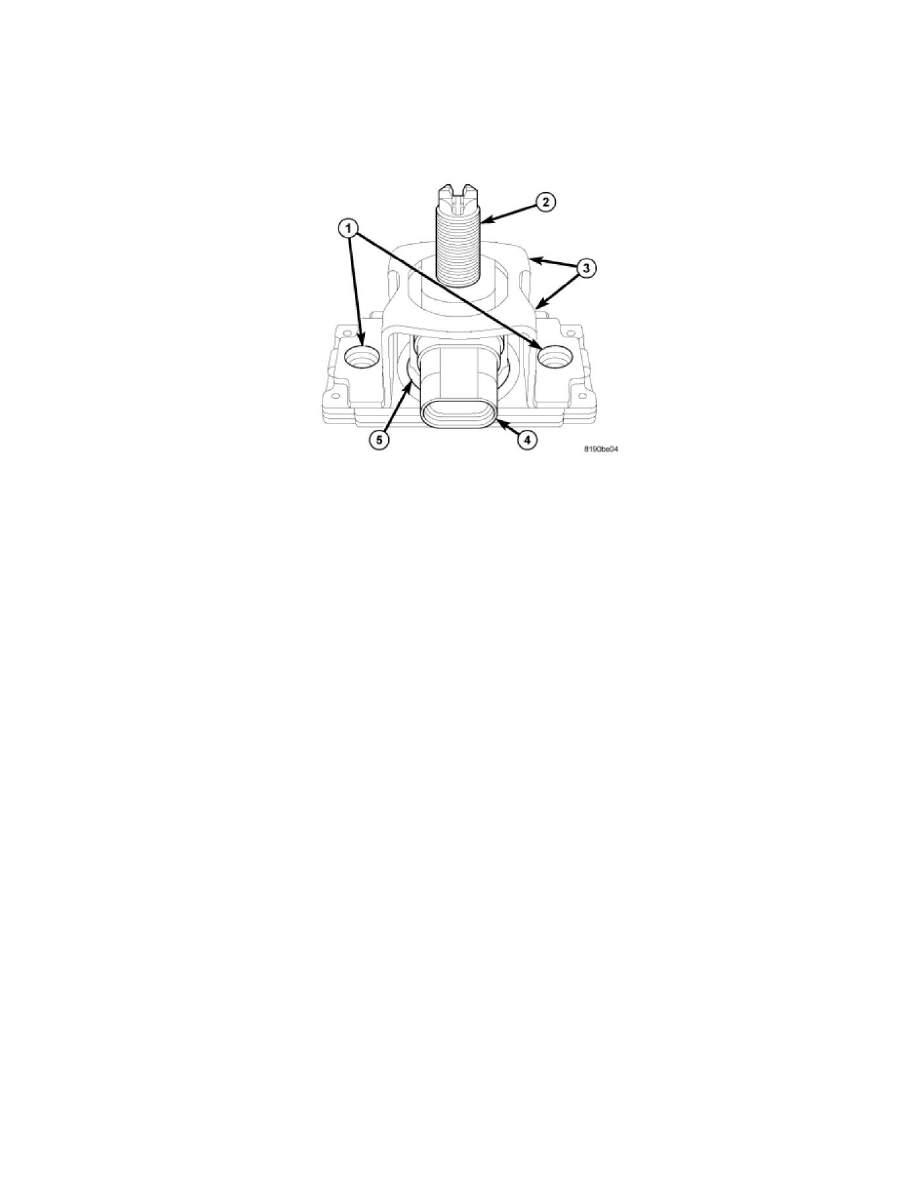Compass 2WD L4-2.0L VIN 0 (2007)

Seat Sensor/Switch: Description and Operation
Sensor-Seat Weight
Description
DESCRIPTION
The seat weight sensors are strain gauge-type units. The electronic elements of the sensor are encased within the sensor body (5) and the sensor body is
located within a stamped metal cage (3). Four sensors are used in the Occupant Classification System (OCS). The sensors are located below the seat
cushion between the seat adjuster track and the seat cushion frame at each corner of the passenger side front seat.
A threaded mounting stud (2) on each sensor body is secured by a nut to the seat cushion frame, and two nuts secure each sensor mounting flange (1) to
two studs integral to the front and rear of the inboard and outboard passenger side upper seat adjuster tracks. A molded connector receptacle (4) integral
to each sensor body is oriented towards the center of the seat and is connected to the vehicle electrical system through a dedicated connector and take out
of the passenger seat wire harness beneath the seat cushion.
The seat weight sensors cannot be adjusted or repaired and, if ineffective or damaged, the entire sensor must be replaced.
Operation
OPERATION
The seat weight sensor units are designed to sense the relative weight of a load applied to the passenger side front seat, which provides a logic input to
the microprocessor of the Occupant Classification Module (OCM). When any load is applied to the seat the load is transmitted through the sensor
mounting stud to the sensor body (strain gauge) of each sensor, causing a change of electrical resistance through the strain gauge. These changes in
resistance within the internal sensor circuitry change the sensor output voltage.
Each weight sensor receives a nominal five volts and a ground through parallel hard wired circuits from the OCM. The OCM then monitors the output
voltage of each sensor on dedicated hard wired data communication circuits. The OCM also monitors the condition of the sensor circuits and will store a
Diagnostic Trouble Code (DTC) for any fault that is detected, then send messages to the Occupant Restraint Controller (ORC) to illuminate the airbag
indicator in the ElectroMechanical Instrument Cluster (EMIC) (also known as the Cab Compartment Node/CCN).
The hard wired circuits between the seat weight sensor and the OCM may be diagnosed using conventional diagnostic tools and procedures. Refer to the
appropriate wiring information. However, conventional diagnostic methods will not prove conclusive in the diagnosis of the seat weight sensors or the
electronic controls and communication between other modules and devices that provide features of the Occupant Classification System (OCS). The most
reliable, efficient, and accurate means to diagnose the seat weight sensors or the electronic controls and communication related to seat weight sensor
operation requires the use of a diagnostic scan tool. Refer to the appropriate diagnostic information.
